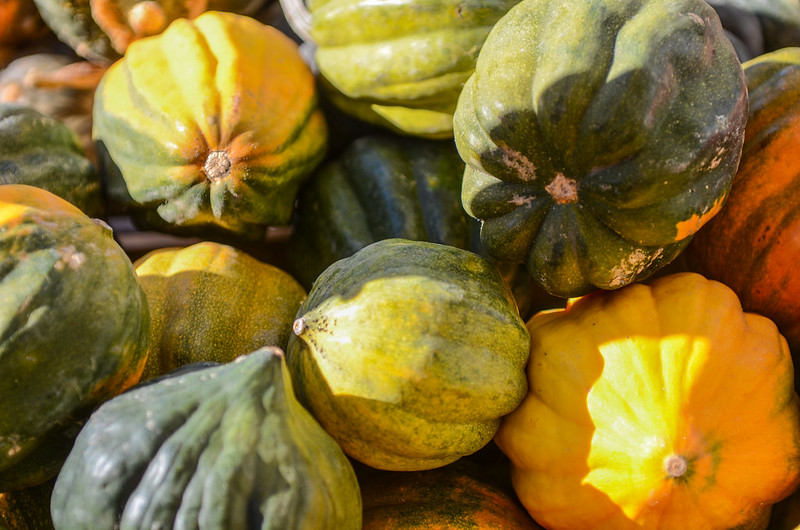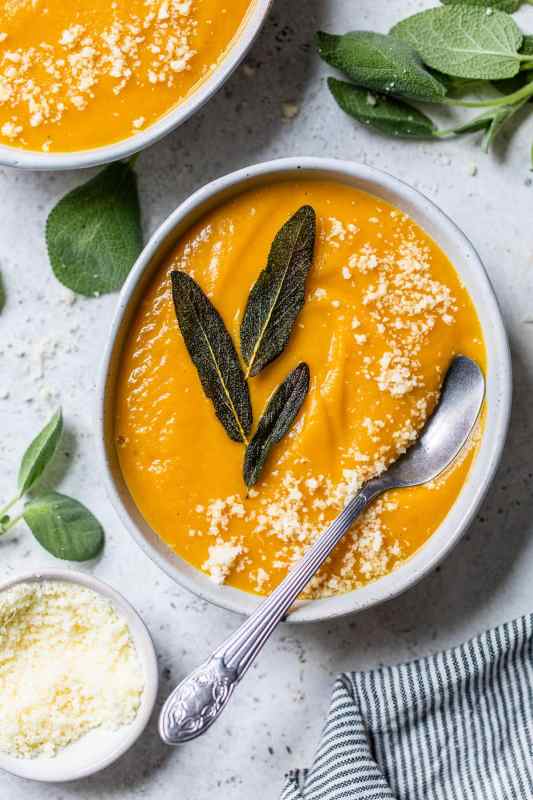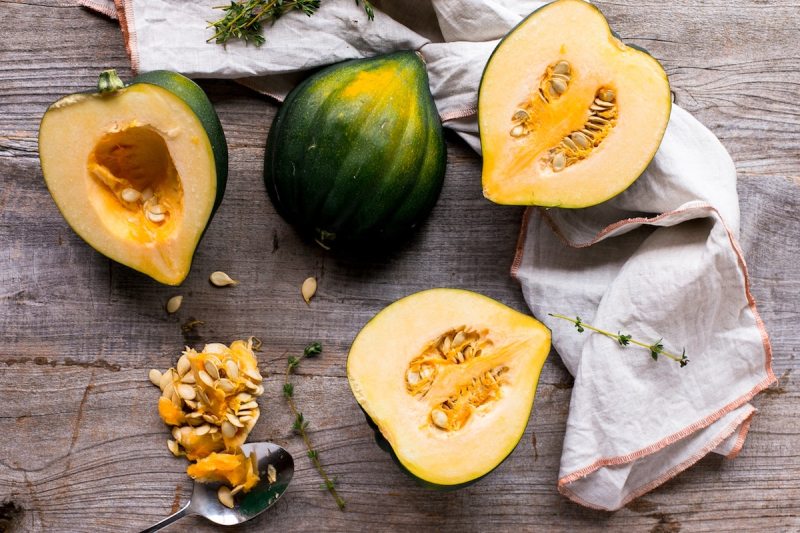
There’s no shortage of squash recipes this time of year, and for good reason. Not only are squash healthy, beautiful, and versatile ingredients that can be prepared any number of ways, but they also fill us with all the warm and fuzzy fall feelings. And who are we to deny ourselves that?
One of our favorite squashes this time of year is the acorn squash. Known for its beautiful buttery, mild sweetness and ability to take on flavors divinely, this cute little fruit is on the smaller side of fall squashes, and, as suggested by its name, resembles an acorn. Let’s crack this guy open and see what we should be doing with this favorite fall ingredient.
Health benefits
Acorn squash is wonderful for a number of healthy reasons. It contains a huge amount of antioxidants that can help to protect against heart disease, certain cancers, stroke, and high blood pressure. It also has a large dose of vitamins that promote eye health and help protect skin from sun damage.
How to prepare acorn squash
Just like its sister squashes, acorn squash can be a bit of a stringy, seedy, pulpy mess inside. Unlike pumpkin, though, the goo is usually contained to a smaller space in the middle of the squash, rather than running throughout.
When preparing an acorn squash, carefully slice it with a sharp knife. While acorn squash has a slightly softer skin than other squash varieties, it can still be a bit tough to get through, so be cautious with your blade. There’s no need to remove the skin of acorn squash, as it’s totally edible and completely pleasant to eat. Even if you’re not a fan, there’s no need to bother with peeling; the skin will easily peel away once the squash is cooked through.
Once the acorn squash is sliced, remove the pulp and seeds using a spoon. Just like pumpkin seeds, acorn squash seeds are absolutely delicious when roasted. We suggest giving them a rinse and a roast for a salty movie-watching snack.
Once your acorn squash is cleaned and sliced, it can be prepared in any number of ways.
How to cook acorn squash
Starchy, mild, and wonderful, the acorn squash takes on flavors magnificently in many applications. There are hundreds of acorn squash recipes, as this little gem absolutely shines when sautéed, roasted, baked, stuffed, or pureed in a soup or sauce. It has a natural savory-sweet nuttiness that’s mild enough to accent a dish perfectly and bold enough to star on its own.
For roasted acorn squash, clean and slice as directed above. Then, on a foil- or parchment-lined baking sheet, spread the pieces evenly, drizzle with olive oil, and season with salt and pepper. Bake at 400 degrees Fahrenheit for 35–50 minutes, depending on the thickness of your pieces.
From there, the amount of delicious dishes you can create with acorn squash is truly limitless. Serve it simply roasted as a wonderful fall side dish. Toss it into a salad to add an earthy creaminess to your greens. Stuff two acorn squash halves with spicy sausage and other roasted vegetables for a hearty meal. Or puree it in a soup that’s perfect for a chilly fall evening.
Acorn Squash Soup

(From Well Plated by Erin)
This silky cold-weather soup is completely satisfying with its caramelized sweetness and rich fall flavor. The subtle earthy notes of the acorn squash are highlighted perfectly with nutmeg, honey, and sage. Make a big batch because you’re going to want to eat this one all week long.
Ingredients:
- 3 whole acorn squash
- 3 tablespoons olive oil, divided
- 1 1/2 teaspoons kosher salt
- 2 tablespoons unsalted butter
- 1 shallot, thinly sliced
- 2 medium carrots, peeled and thinly sliced
- 1/4 teaspoon ground black or white pepper
- 6 garlic cloves, smashed and peeled
- 2 tablespoons honey
- 4 cups low-sodium vegetable or chicken stock, divided
- 10 sprigs fresh thyme, tied into a bundle
- 1 bay leaf
- 1/2 teaspoon sage
- 1/4 teaspoon ground nutmeg
- 1/4 cup finely grated parmesan, plus more for serving
Method:
-
Place a rack in the center of the oven and preheat the oven to 400F. Line a rimmed baking sheet with parchment paper.
- Cut the squash in half from stem to base. Scoop out and discard core and seeds.
- Arrange the halves cut-sides-up on the prepared baking sheet. Brush each half with 1 teaspoon olive oil and season with 1 teaspoon salt.
- Bake 40 to 50 minutes, or until the flesh is fork-tender. Set aside to cool, then scoop out and reserve the flesh.
- In a large pot, heat butter and 1 tablespoon olive oil over medium heat. Once the butter has melted, add carrots, shallot, 1/2 teaspoon salt, and pepper. Sauté 6–8 minutes, until vegetables begin to caramelize.
-
Add 1/2 cup stock and stir, scraping the bottom of the pan to remove any brown bits that have stuck.
-
Reduce heat to medium-low and add reserved squash, garlic, and honey. Cook for 30 seconds, until the garlic is fragrant, then stir in the remaining stock.
- Add the thyme and bay leaf, then bring the soup to a simmer. Simmer for 15 minutes, stirring periodically.
- Remove the thyme and bay leaf. With an immersion blender, puree the soup until smooth.
- Stir in the sage, nutmeg, and parmesan. Serve warm with additional parmesan, if desired.






